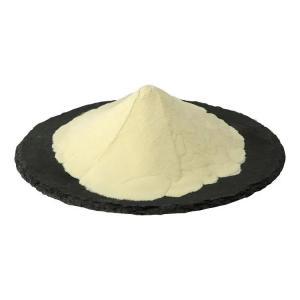Phospholipids used in the food industry
Time:2025-02-14The usage of phospholipids in the food industry must be determined by considering multiple factors. Below is a detailed introduction:
I. Regulatory Standards
1. National Standards
Different countries and regions have specific food regulations and standards that define the maximum allowable usage and scope of application for Phospholipids in various food categories.
In China, the GB 2760 – National Food Safety Standard for the Use of Food Additives provides detailed specifications on phospholipid usage.
In formulated milk, phospholipids are generally used in appropriate amounts based on production needs.
In certain baked goods, there may be specific usage limits.
2. International Standards
The Codex Alimentarius Commission (CAC) has established relevant standards that serve as global references for the use of phospholipids in food. These guidelines help ensure food safety and consistency in international trade.
II. Food Type and Characteristics
1. Lipid-Based Foods
In margarine and shortening, phospholipids are commonly used as emulsifiers and antioxidants.
The general usage level is 0.1%-0.5%, helping to stabilize emulsions, prevent oxidation and rancidity, and extend shelf life.
2. Baked Goods
In bread and cakes, phospholipids act as emulsifiers and softeners, improving dough handling properties and baking quality.
The typical usage level is 0.5%-1.5% of the flour weight.
Phospholipids contribute to softer bread, delayed staling, and increased cake volume and fineness.
3. Dairy Products
In milk powder and ice cream, phospholipids function as emulsifiers and dispersants, ensuring even fat distribution and preventing fat aggregation and floating.
The common usage range is 0.1% - 0.3%.
III. Functional Requirements
1. Emulsification Function
When phospholipids are used primarily as emulsifiers, they help mix oil and water phases to form a stable emulsion.
In mayonnaise and salad dressings, the amount of phospholipids needed depends on the oil-to-water ratio and emulsification difficulty.
The typical dosage range is 0.5% - 2%.
2. Antioxidant Function
In high-fat foods, phospholipids can function as antioxidants, delaying oxidation and spoilage.
The general usage range is 0.05% - 0.2%.
Phospholipids bind with free radicals in fats, preventing oxidative chain reactions and improving oxidative stability.
3. Mold-Release Function
In candy and chocolate production, phospholipids are used as release agents, helping products separate smoothly from molds.
The common dosage range is 0.05%-0.1%.
IV. Cost Considerations
1. Phospholipid Costs
The cost of phospholipids varies depending on their source and purity:
Soy lecithin is relatively low-cost.
Egg yolk phospholipids are more expensive.
Manufacturers aim to select cost-effective phospholipids while ensuring product quality and functionality.
By conducting experiments and production trials, they determine the optimal dosage that maintains quality and cost efficiency.
2. Overall Cost Impact
In addition to the cost of phospholipids themselves, companies must consider their effect on production processes, equipment efficiency, and product shelf life:
Overuse may result in excessive functionality, leading to unnecessary costs.
Insufficient usage may cause product quality issues, increasing after-sales costs due to defects.
V. Experimentation and Production Practices
1. Experimental Optimization
During new product development or process improvement, a series of experiments are conducted to assess how varying phospholipid levels affect food’s physical, chemical, and sensory properties.
For example, when developing a new beverage, researchers adjust phospholipid levels to test stability, taste, and appearance, ultimately determining the optimal dosage for best overall quality.
2. Production Experience
Food manufacturers accumulate practical experience over time, using past production data and product quality feedback to fine-tune phospholipid usage.
They also reference industry best practices and adapt formulations based on their specific production processes and equipment, ensuring optimal phospholipid usage for their products.
The appropriate usage of phospholipids in the food industry depends on regulatory standards, food type, functional requirements, cost considerations, and practical production experience. Through experimentation and optimization, manufacturers can achieve the best balance between functionality, quality, and cost-effectiveness, ensuring safe, high-quality, and competitively priced food products.


 CN
CN





